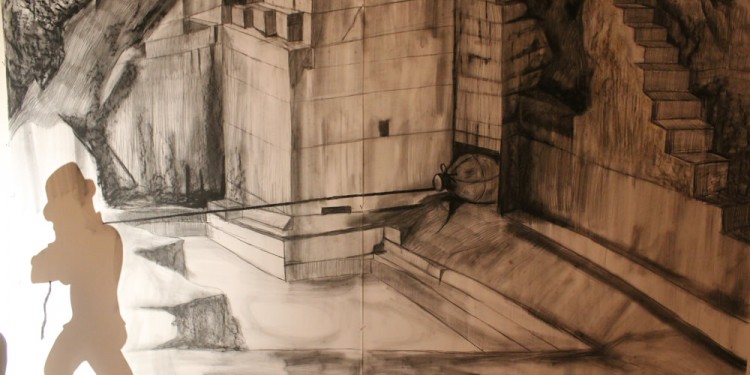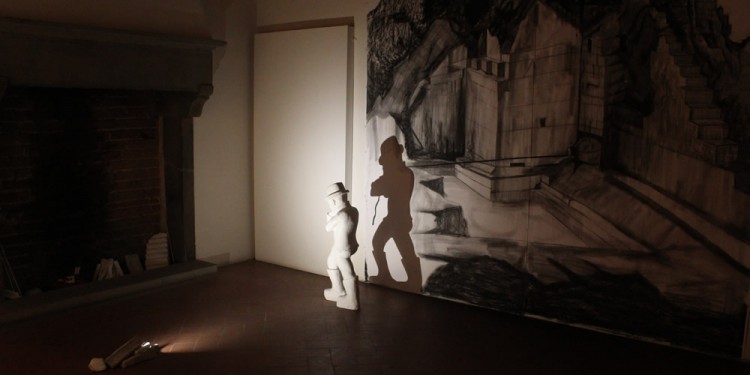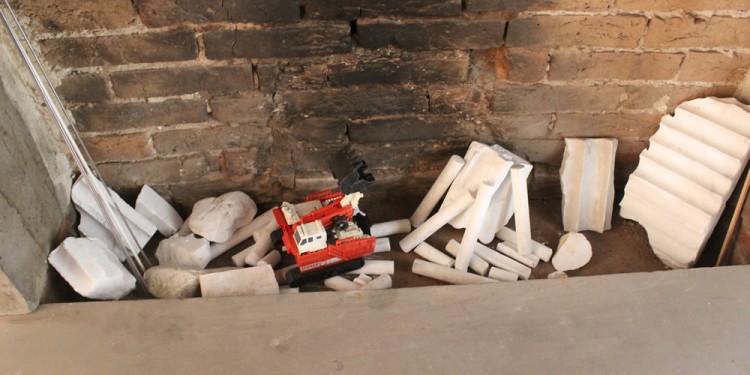Prabhakar Pachpute was born in Chandrapur in 1986. He earned his Bachelor’s degree in fine arts from the University of Khairagarh, Chhattisgarh, and his MFA from M.S. University of Baroda. His artistic practice focuses primarily on sculpture and drawing; the latter is mostly exploited as a possibility to expand the borders of sculpture. His first solo show, Canary in a Coalmine, held at the Clark House Initiative, Mumbai, dates back to 2012. He also participated in group exhibitions, including L’Exigence de la Saudade, curated by the Clark House Initiative and held at the Kadist Art Foundation, Paris (2013); Black or White, curated by Galit Eilat at the Van Abbemuseum, Eindhoven (2013). In 2014, he participated in the São Paulo Art Biennial. In 2012, he was shortlisted for the Skoda Prize addressed to young artists.
– title: It was never mine, but now it is a mine
– date: 2013
– medium: installation; graphite on paper, marble sculpture, paintings
– size: environment
– description: Beginning in 2010, the artistic subject matter favoured by Prabhakar Pachpute was the life of coal miners and the problems connected with the exploitation of natural resources in India; a reality he is familiar with since he originates from Chandrapur (nicknamed the “Black Gold City”) and because of his personal experience: his family has worked for three generations in one of the oldest coal mines of the country. Prabhakar Pachpute grasped this kinship between Valdarno’s industrial past and the current situation in India, and focused his investigation during the residency at Casa Masaccio in 2013 on the history of the mines in Castelnuovo dei Sabbioni, addressing the consequences of the end of lignite extraction and the onset of post-industrialisation. His reflections on the working conditions in Indian coal mines and the study of the situation in Carrara and its anarchical roots are brought together into a site-specific installation where the paintings from the museum’s collection embrace his drawings. Here, the drawing is associated with the use of the shadow created by the sculpture representing a miner, which allows the artist to capsize the drawn image.


